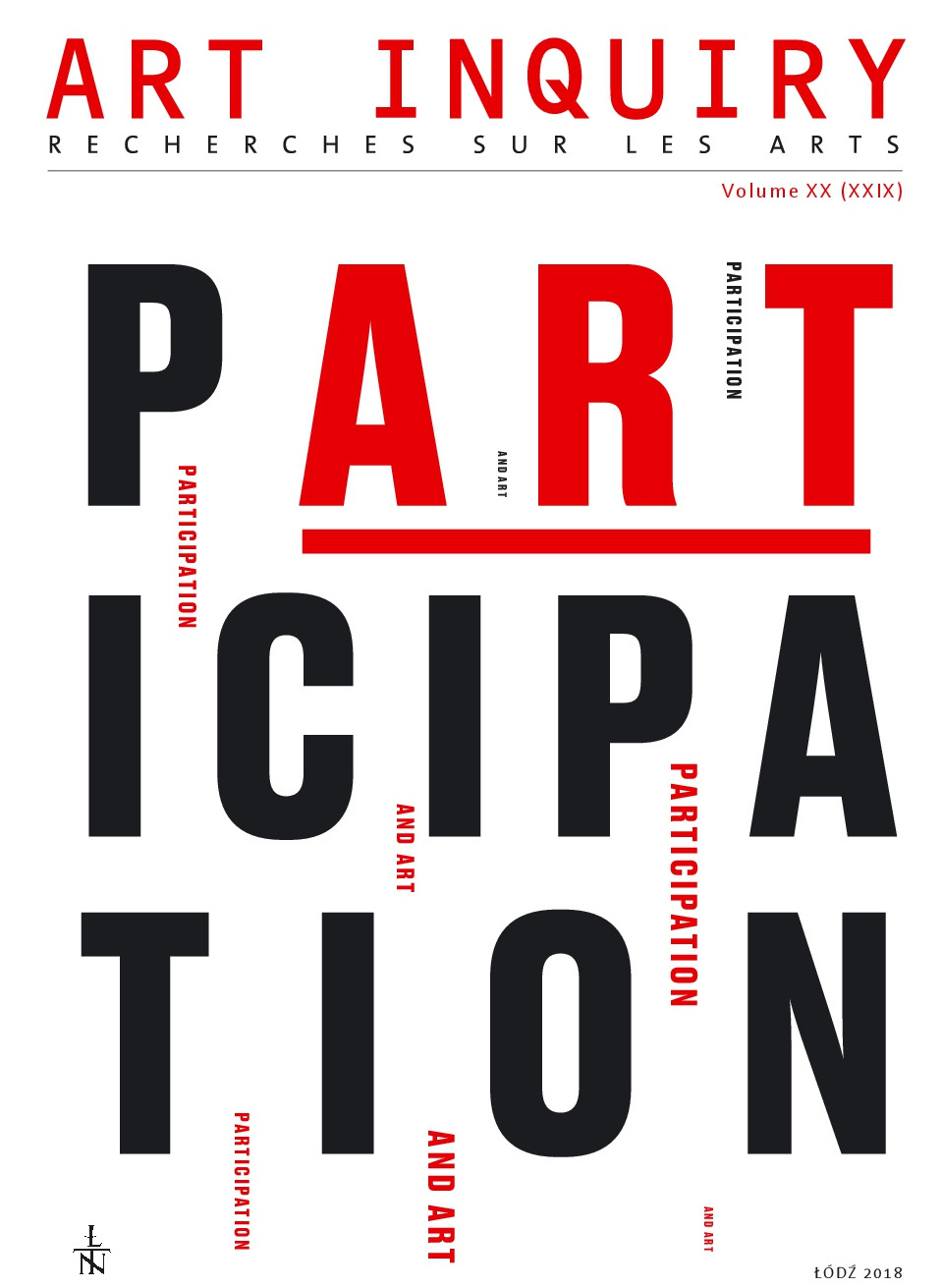Performance and Participatory Art
https://doi.org/10.26485/AI/2018/20/12
Abstract
The relationship between participatory art and performance is complex. On the one hand, their affinity is recognized, because in both cases we are dealing with emphasizing the role of action, but on the other, this action is understood differently. If the first aspect is taken into account, in museum or gallery press releases the manifestations of participatory art are referred to as “performances” – sometimes accompanied by an adjective. The aim of the article is to take a closer look at this issue. The discussion begins by highlighting the fact that happenings (especially European) from the 1960s are more often considered as a reference point for participatory art than performance art. Claire Bishop points to the conscious socio-political criticism of the consumer society that appears in happenings. The author of the article argues that the structure of these activities may also be an argument. When discussing the rules of public participation in happenings and performance art, she cites Erika Fischer-Lichte’s views that in the latter case a “feedback loop” should be created between the performer and the audience. Such a loop is not formed in the case of happenings and cannot be shaped in participatory art, where the artist is only one of the people participating in the action. The article examines examples of characteristic works based on the principle of participation: Rirkit Tiravanija, Tania Bruguera and Paweł Althamer. In none of them did the artist occupy a distinguished position, she/he did not affect the way the participants behaved, and she/he only created an opportunity for a community. In the first case, its formation was completely free, in the second – there were forms of pressure release from it, in the third – there was encouragement. Nowhere, however, did the artist define the rules of action, did not determine the stake, did not set goals. At the same time, while making the participants the creators of the course of the action, the question “What for?” remains important in participatory art, which lends it a political character.



